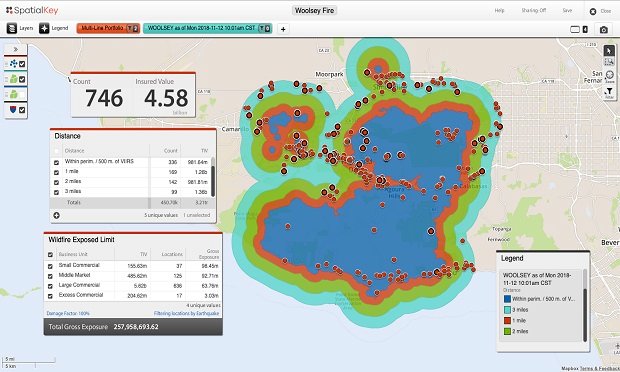To paraphrase Mark Twain, everybody is talking about big datathese days, but not everyone is doing anything aboutit. Research has shown that despite its investment inanalytics, the insurance industry as a whole is struggling to findthe big gold nuggets in all the data it collects.
|Insurance carriers are facing a number of challenges, but theyall share the problem of dealing with the new, connected, always-onconsumer. Insurers hoping to turn these consumers intocustomers need to be able to offer them a personalized, highlytailored experience that's consistent across multiple channels—inperson, online, or mobile.
|New non-insurance players entering the industry often have anacute understanding of how to service today's consumers, and theyare unburdened with legacy systems and processes. Insurersthemselves, however, have been slow to introduce the newproducts and pricing models needed to provide the tailored serviceconsumers demand. And although insurers have doubled theirmarketing dollars over the past two decades, they lack aproper understanding of the returns on this investment.
|Accenture's Analytics in Action survey covered600 companies in a range of industries, including insurance. Amongthe findings:
- Insurers are committing resources and budget toanalytics. A third of insurers have the requiredhuman and technological resources needed for analytics and areusing analytics regularly with some success—significantly above theoverall average of 20%.
- Senior insurance management has bought into analytics, butslightly trail the total sample (57% versus 67%).
- Insurers as a group are not using analytics across the entireenterprise, but rather within specific units. In other words,analytics tends to be seen as a tactical rather than a strategictool. The real opportunity of analytics is to use the entirecompany's resources to service customers, and here insurance islagging behind other industries.
- Almost half of insurers (44%) are using analyticsretrospectively to understand the past. Only23% use data insights to predict what will happen, andthus enable themselves to react to customers in real time and tomake better decisions.
As Accenture's research indicates, insurers are not reapingthe real benefits from their analytics investments because they aresimply not ambitious enough about what analytics can achieve.Markets are volatile and customers fickle: A moresophisticated approach will help insurers understand more andcontrol the game much better—and thus begin to achieve the paybackthey sense is just outside their grasps at present.
|The research points to three major barriers keeping insurersfrom getting the most out of their analytics investments.
- Resources. A third of insurancerespondents say they have enough human and technological resources,but more than half say they are being held back by the resourcesthey have (or don't have).
- Culture and organization. While mostinsurers have appointed a specific person to be responsible fordata management, C-level support is not as strong as is needed (57%versus 67% in the total cross-industry sample). Management'ssupport is largely confined to the creation of an integrated datastrategy aimed at identifying growth opportunities and monitoringperformance.
- Talent mismatch. There is a criticalmismatch between the supply and demand of the specialized talentneeded to mine analytics gold. Companies are already engaged in aglobal war for talent, but the battle is that much more fierce inanalytics, and even more so in insurance analytics. Insuranceworkforces are aging, and today's students and graduates arenot seeing the industry as a career option. In particular,tomorrow's analytics workforce is likely to be located indeveloping countries like India and China—and will likely lackinsurance-specific knowledge and skills.
These are high barriers, but many insurers have made a goodstart. Many insurers have been gathering and aggregatingdata—lots of it—for years. The critical “last mile” involvesadapting the tools, technologies and talent to separate the insightfrom the noise, and this is where many insurers arestruggling. Not all insurers are created equal, of course;research shows that high-performing companies invest moreeffectively in analytics, focusing on newer technologies with anemphasis on insight to outcomes.
|Insurers need to create an enterprise model that bridgesfunctional silos. Analytics success will come when they startto look at the company as a whole, and develop ambitious programsthat aim for a mixture of immediate and longer-term gains.Insurers also will need a willingness to look beyond theindustry to find new ideas. After all, the expectations of theircustomers are being set outside of insurance.
|Insurers may have some way to go before achieving the desiredpayback from their investments in analytics.This, however, isopportunity for visionary insurers: those who see the crucial rolethat analytics can play in improving their businesses, and inbuilding a foundation for growth.
|Want to continue reading?
Become a Free PropertyCasualty360 Digital Reader
Your access to unlimited PropertyCasualty360 content isn’t changing.
Once you are an ALM digital member, you’ll receive:
- All PropertyCasualty360.com news coverage, best practices, and in-depth analysis.
- Educational webcasts, resources from industry leaders, and informative newsletters.
- Other award-winning websites including BenefitsPRO.com and ThinkAdvisor.com.
Already have an account? Sign In
© 2024 ALM Global, LLC, All Rights Reserved. Request academic re-use from www.copyright.com. All other uses, submit a request to [email protected]. For more information visit Asset & Logo Licensing.








